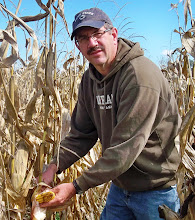By Charlie White, Sustainable Agriculture Extension Associate
Food culture is on the rise in theUnited States
Food culture is on the rise in the
 |
| A local loaf, crafted from 1/3 whole wheat flour, freshly milled from wheat grown in PSU’s 2010 variety trial, and 2/3 white spelt flour from Small Valley Milling in Halifax, PA. |
Make the most of what you have. Pennsylvania Penn State Avella , PA Pennsylvania
Try an artisan variety. Not all wheat varieties taste the same, according to panels of bakers and consumers throughout the Northeast who have conducted taste tests of numerous wheat varieties. Many of the more flavorful varieties seem to be heirlooms. In a Vermont taste test, preliminary survey data suggested that Ladoga, a spring wheat variety developed in Russia Canada in recent years is reputed to have exceptional flavor and performed well in trials in Pennsylvania and New York Frederick Frederick Frederick
Use it freshly milled. To appreciate the true flavor of wheat, use whole wheat flour when it is freshly milled. Whole wheat flour contains the bran and the germ of the wheat kernel, which are valuable sources of fiber, vitamins, minerals, and flavor. The germ also contains a small amount of fat which will turn rancid if stored at room temperature for more than a few weeks after milling. This is why many whole wheat flours purchased off the grocery store shelf can result in a slightly bitter finished product. Some farmers and mills, like White Frost Farm in Danville , PA and Farmer Ground Flour in Trumansburg , NY
Penn State plans to expand it’s testing of artisan and heirloom grain varieties under organic management this fall, in collaboration with colleagues in New York and North Dakota. Also, on September 16th, Penn State
Resources on artisan grains:
Northeast Organic Wheat Project- http://www.growseed.org/now.html
Organic Growers’ Research and Information-Sharing Network – http://www.ogrin.org/



No comments:
Post a Comment